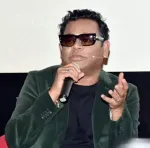Play School
The concept of playschools in India was unheard of few decades ago and few children from rich families attended the playschool. Now, the importance of playschools is recognized as the preschool years are the foundation for lifelong learning. The knowledge base about teaching and learning content in preschool classrooms has also grown to a great extent. It has been found that the child develops significantly in physical, cognitive, social and emotional aspects in the early years, and its experiences deeply influence its disposition for learning.
There are hundreds of independent playschools in each state and each play school offers the lower and the upper kindergarten classes for the children between the ages four and six. The playschools develop basic skills and social behavior by games, exercises, music, and simple handicrafts. The Children at kindergarten learn to communicate, play, and interact with others appropriately. The seven foundation learning areas of playschool are thinking, communicating, sense of self and others, health and physical understanding, social living and learning, cultural understanding and understanding the environments. The research has shown light on the value of teachers' making intentional efforts to guide children's thinking and support their learning as they interact with children throughout the day, plan individual and small- and large-group activities, and organize the classroom environment. The teacher provides various manipulative materials or tools and activities to motivate the children to learn the language and vocabulary of reading, mathematics, science, and computers, as well as that of music, art, and social behaviors. The children also learn to be apart from their parents without anxiety. After kindergarten, the children will advance to the first grade.
Some private playschools offer the Montessori Method of preschools. It is based on observing young children and learning from them about their characteristics and needs. The universal characteristics of children are recognized for each level of development in the children's house, where each child is nurtured and guided in individually-paced learning and development. This method emphasizes on the uniqueness of each child and recognizes that children are different from adults in the way they develop and think. The Montessori curriculum focuses on five areas such as the practical life, the sensory awareness education, the language arts, the mathematics and the geometry, and the cultural subjects.
Primary School
The primary or the elementary education has the initial years of formal and structured education during childhood. In primary education, the child stays in steadily advancing classes and move on to the secondary schooling. The children are usually kept in classes with one teacher who will be primarily responsible for their education and welfare for that particular year. Additionally, this teacher may get assistance to varying degrees by specialist teachers in certain subject areas, mainly music, dance or physical education. The most notable feature of the primary education is the continuity of a single teacher in the class to build up a close relationship with the class.
In India, primary education has its own challenges and achievements. There are millions of young children in lower income groups, especially rural and girl children, comprising nearly 40% of first grade entrants never complete the primary school. There are factors such as poorly qualified teachers, very high student-teacher ratios, inadequate teaching materials, and out-dated teaching methods which result in a low quality of education. As a result, there are many students who even after completing six years of primary schooling in village public schools lack even rudimentary reading and writing skills. At the same time, the children attending urban schools are subjected to extreme competitive pressures since very early age to acquire basic language skills and memorize vast volumes of information. Even the parents and teachers exert pressures on these children to acquire academic skills.
For rural India to have strong educational base, the present system of education which is too centralized and urban oriented must be modified. The curriculum must concentrate on the life-view and the day-to-day living styles of the communities to which the children belong.
Secondary / Higher Secondary
The Secondary level education is like a bridge between elementary and higher education. It prepares young students between the age group of 14 and 18 for entry into higher education. According to the National Sample Survey Organization, the population of children in the 14-18 age groups was estimated at 96.6 million in 1996/97. But the enrolment figures show that only
27 million children were attending secondary schools. This implies that two thirds of the eligible population remains out of the secondary school system.
Each major Indian city has a large number of government funded high schools catering predominantly to the working classes, who form the majority of the population. There are also private schools offering high school education. There are also a number of schools run by the Municipal Corporation offering free education to the poor section of the society. The private schools usually follow the national curriculum but only few offer international qualifications. The various types of schools offering secondary/higher secondary education are as follows.
- Central Government Funded and Managed Schools
- Central and State Funded Schools
- Private Schools
Central Government Funded and Managed Schools
The Central Government funded and managed central schools are called as the Kendriya Vidyalayas which were set up to cater to the educational needs of children of transferable Central Government employees including Defence and Para-Military personnel by providing a common programme of education. All these schools are affiliated to Central Board of Secondary Education and are co-educational, composite schools. The quality of teaching is kept reasonably high by an appropriate teacher-pupil ratio and there is no tuition fee for boys up to Class VIII and girls up to Class XII. There is also no tuition fee for Scheduled castes and scheduled tribes students and the children of KVS employees.
Central and State Funded Schools
There are a large number of central and state government funded senior secondary schools which are managed by the local Municipal Corporations. These schools offer free education, food, uniform, etc to students. The medium of instruction in these schools is usually the local language. These schools are affiliated either to the Central Board of Secondary Education (CBSE) or the State Boards. They cater to the very poor section of the society.
Private Schools
The private schools are completely funded by private individuals, bodies, or trusts and these schools cater to the middle and upper class population of India. Most private schools are affiliated to the Central Board of Secondary Education (CBSE) or the Indian School Certificate Examination (ISCE) and offer their standard exams. Some private schools also offer the International Baccalaureate
(IB) and A-Levels.
Select A Nakshatra
- Aswathi (Ashwini)
- Bharani
- Karthika (Krittika)
- Rohini
- Makayiram (Mrighasira)
- Thiruvathira (Ardra)
- Punartham (Punarvasu)
- Pooyam (Pushya)
- Ayilyam (Ashlesha)
- Makam (Magha)
- Pooram (Purva Phalguni)
- Uthram (Uttara Phalguni)
- Atham (Hasta)
- Chithira (Chitra)
- Chothi (Swati)
- Vishakham (Vishaka)
- Anizham (Anuradha)
- Trikketta (Jyestha)
- Moolam (Moola)
- Pooradam (Purvashada)
- Uthradam (Uttarashada)
- Thiruvonam (Sharavan)
- Avittam (Dhanishta)
- Chathayam (Shatabhisha)
- Poorattathi (Purvabhadra)
- Uthrattathi (Uttarabhadra)
- Revathi (Revati)
Select Your Sun Sign






